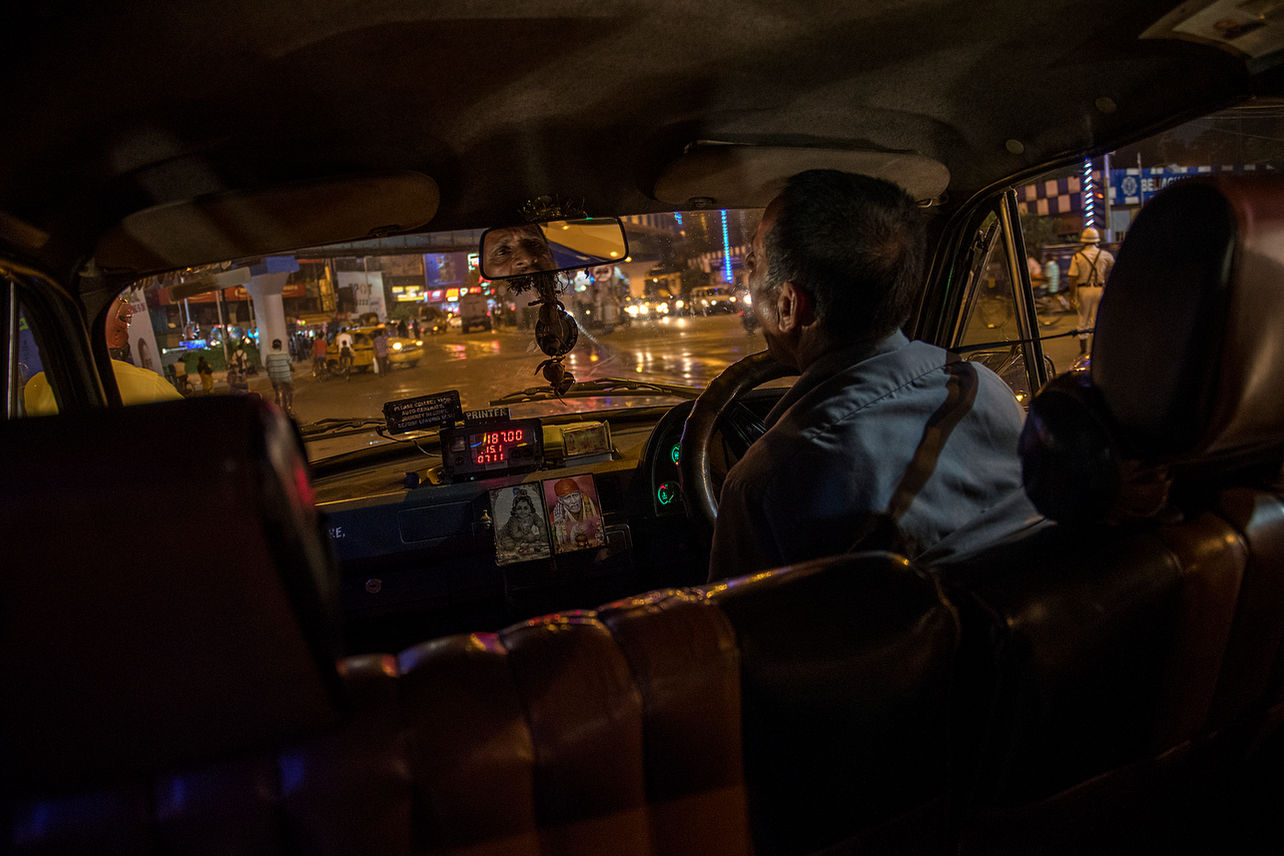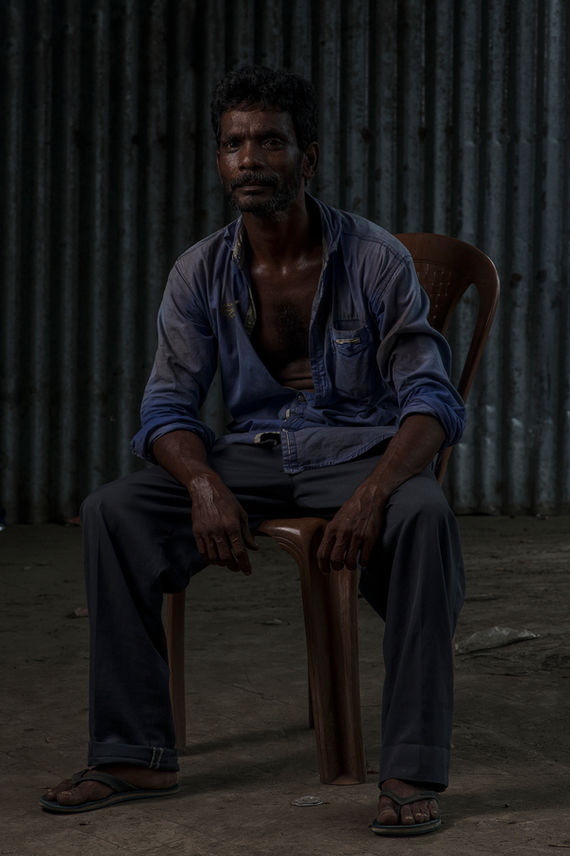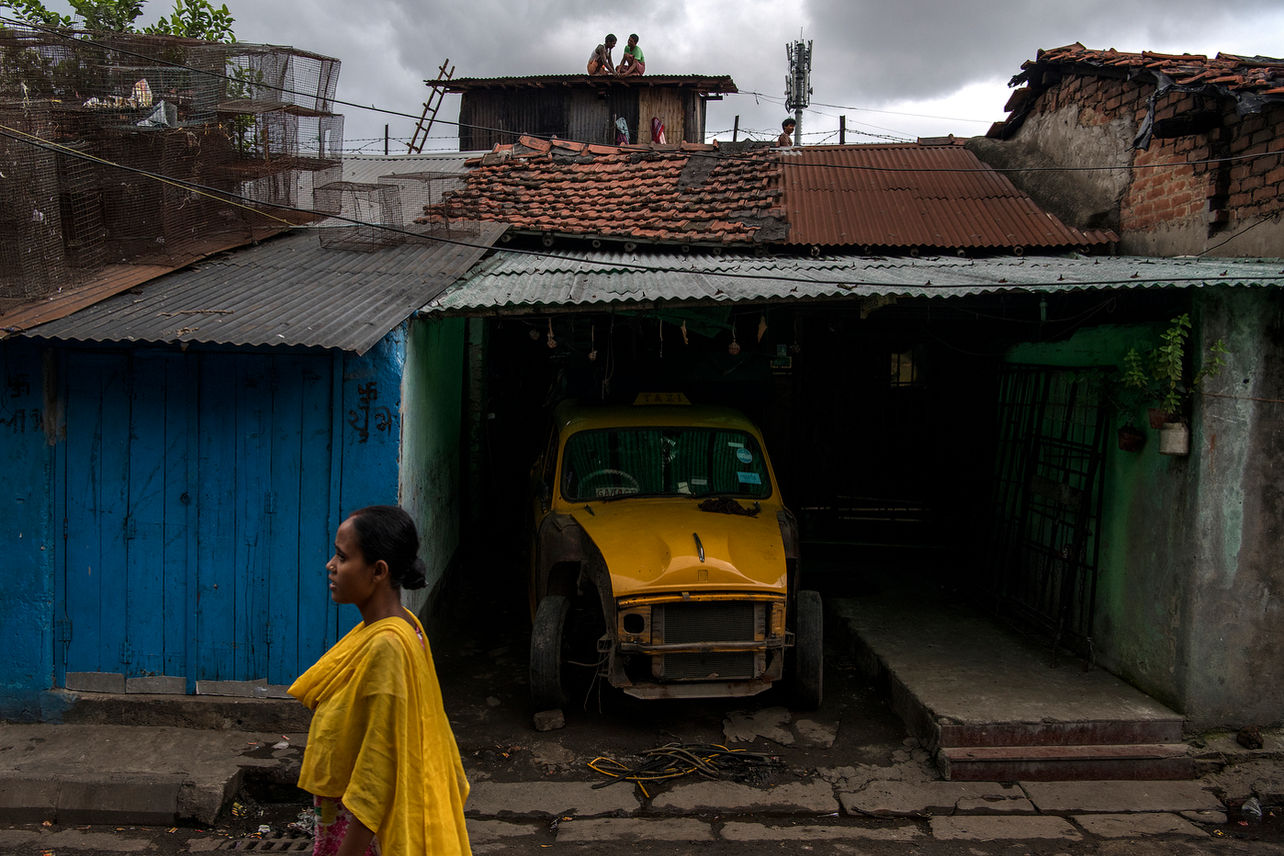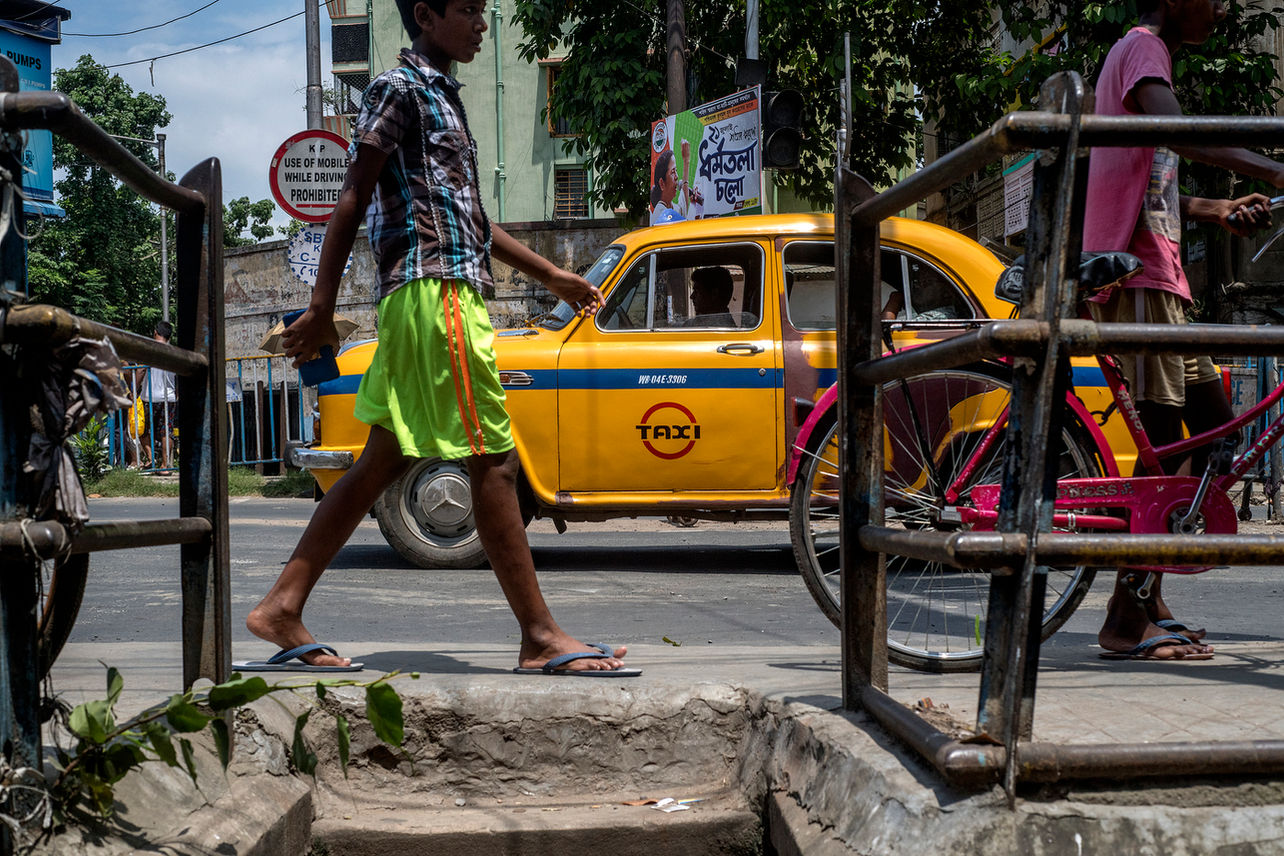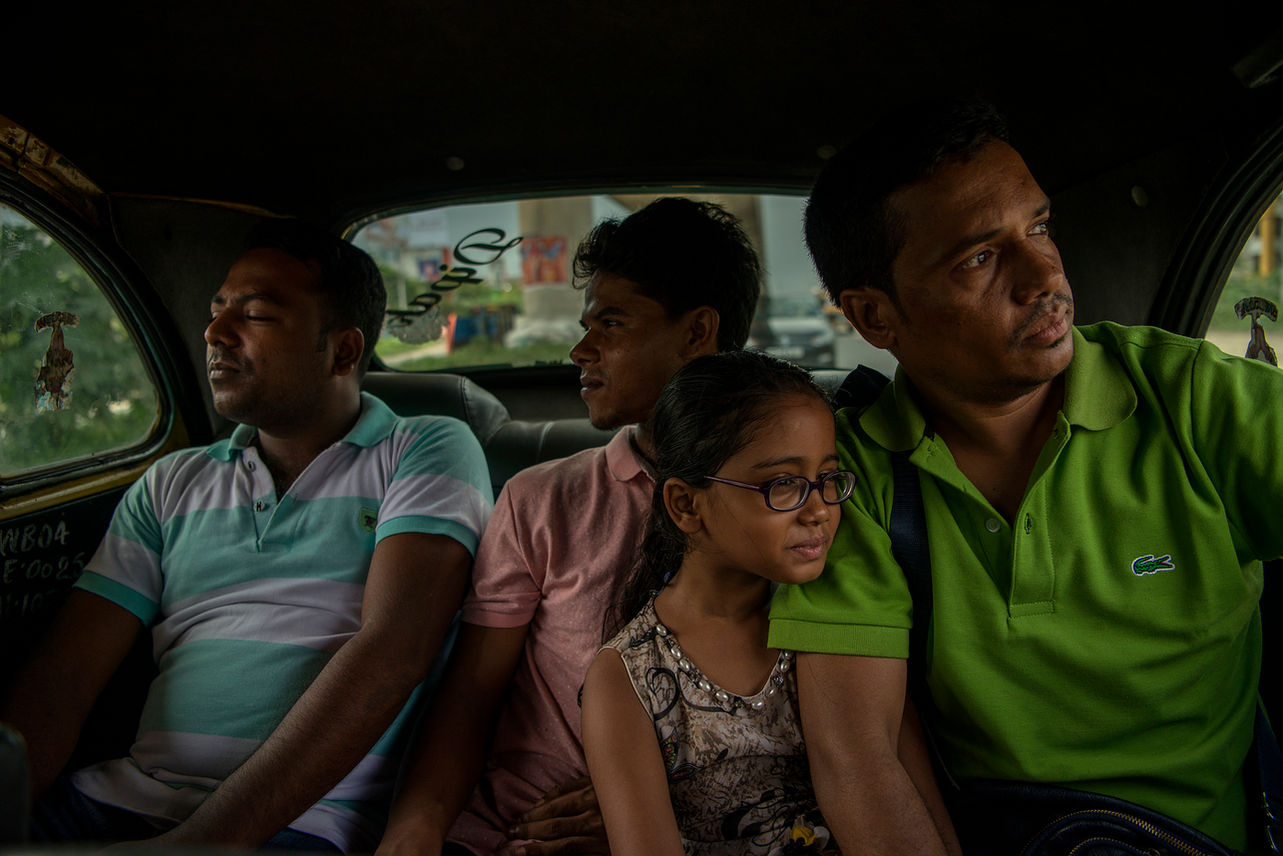BUZZING ALONG THE HIVE TRACK OF KOLKATA
WRITTEN BY
Taylor Nam
LOCATION
Kolkata, India.
City. Home. Hive. Yellow taxi cabs buzz along Kolkata’s hot, honking, congested mess of traffic like bees in a swarm. These vehicles share the streets with rickshaws, tuk tuks, buses and pedestrians carrying suitcases, children and even baskets of good. Rickshaws are labor-intensive. Tuk tuks are small and uncomfortable. Buses are crowded. And one can only travel so far on foot. Yellow taxi cabs, then, are truly what it means to move in and around Kolkata. If anyone needs to get anywhere, a yellow taxi cab is poised, ready to weave a path through the crowd. It has been this way for as long as anyone can remember.
Since August 2013 brought the advent of app-accessible big-corporation driving services like Uber, more and more yellow taxi cabs are left to idle on the very streets they used to dominate. Because the Ambassador cab manufacturer was forced to close in 2014, just months after Uber was introduced to Kolkata, the yellow taxi cabs and their drivers must now face a fast-approaching expiration date.
But wait. This is not a lament about the tragedy of Western World technology infiltrating yet another culture.
This is not a sermon about preserving the old way of life.
This is a love letter; a dedication to the yellow taxi cabs and their drivers who have, for generations, defined Kolkata like a bee colony defines its hive.
Every morning, before the city has fully awakened, yellow taxi cabs and their drivers are already humming on street corners. Cabbies range from younger men with swept hair to older men sporting moustaches and weather-lines across their foreheads. Although they have full autonomy in their daily schedules, most cabbies follow a pattern.
They start their workdays between eight and nine in the morning, they take a break with friends and fellow cabbies around midday to play chess, eat packed lunches of rice and curry, and then they drive until as late as 11 at night. When cabbies finally go back home to their families, there remain few precious hours before they must hit the streets again. There are no “weekends” for a cabbie and a social life only exists either in his vehicle or during their short breaks.
After a full week of work, an average cabby profits around 2000 rupees (~$27 USD) per week, after paying the owner of the cab a rental fee of 400-500 rupees (~$5-7 USD) per day. Most cabbies rent their vehicles–both a blessing and a curse. After driving for 30 years, Apurba Chatterjeesays, “It is not possible to actually earn good money if you are always having to pay the owner. It is a headache.” For most cabbies, though, it is simpler to rent; cab owners are responsible for maintenance and repairs–costs that can quickly and unexpectedly add up. Renting the taxi cab also allows drivers the option to walk away from the job if they ever have the desire to.
All cabbies (except one very legendary and now retired female cabbie) are men and the sole providers of their households. The ~2000 rupee profit goes to support not just the driver himself, but his wife and children and, sometimes, extended family. For example, one cabbie named Ashok Ghosh, driver for 30 years, works to put his daughter through nursing school.
Motivated by something other than money to pursue the profession, cabbies expressed that driving a yellow taxi cab affords the closest feeling of freedom one can achieve while putting food on the table.
For example, the cabbie may drive for as little or as long as he wants each day. Technically, he may stop for an extra lunch. He may drive straight for 14 hours. Or he may call it a day in the early afternoon hours. However, in order to provide for family expenses and vehicle rental costs, most cabbies work long shifts on the road. How they structure these long shifts is up to the cabbie himself. Nearly total independence and ability to move on by whim is echoed among cabbies as the best part of their chosen profession.
The most common cabbie origin story involves completing a driving course, passing a simple driving test and then, usually through an acquaintance, acquiring a taxi cab. The driving certification remains valid until a cabbie turns 60 years old.
Becoming a cabbie would seem to be a fairly simple process. However, as the veteran cabbies express, becoming a streetwise cabbie takes years of experience and practice. Shambu Mahato, a cabbie for 20 years, claims to know every place in Kolkata. Every place. And, not only does he know every place, but he knows how to get to each place.
Of course, the street and city knowledge varies between cabbies, as do the vehicles, themselves. Many cabs wear shrines, beaded necklaces, photos, flowers and knickknacks. Others remain bare. Cab driver Shambu Mahato, expressed: “Some people have a deep bonding with their cab, that is why they decorate. But some see it as a profession alone.”
Cabbie, Rupal Mando, echoed Mahato’s first sentiment: “[For me,] the cab is like a second home.”
Although their vehicles may feel comfortable and familiar, indeed like a second home, every once and a while, a cabbie is reminded that he spends most of his time in a confined space with strangers. Strangers who, as driver of 33 years Jagdish Mondal experienced firsthand, may reveal themselves to be armed and dangerous thieves.
The most exciting ride of Mondal’s career began much like all the others. After he dropped off a passenger on the outskirts of Kolkata, five men approached his cab and said they have a sick friend who needed a ride to the city. All five men and the “sick friend” piled into Mondal’s backseat. Not long into the trip, they pulled guns and knives on the cabbie, surrounding him in the driver’s seat. The men ordered him to leave everything that he had: money, vehicle, everything.
Having no other choice, the cabbie did as he was told and watched the men drive off with his livelihood. Mondal was soon picked up by a local truck driver and then spent the rest of the night going back and forth between police stations, trying to convince the officers to help him track down the thieves. Finally, one police station took down Mondal’s information and the cab owner sent a car to retrieve him. The cabbie relates that, about three days later, the police found the stolen taxi cab standing idle and empty by a house. The thieves, however, were never found.
Mondal’s is not an uncommon story. Other cabbies related stories of being held at gunpoint or being forced to aid in a kidnapping. And yet, they keep driving. It would seem that the potential danger stands the price of freedom; many cabbies are entering their 20th, 30th, even 40th year of cruising the Kolkata streets.
Some cabbies see the introduction of Uber as a sign for them to retire from the business altogether. Muhammad Nuruddin Baidia lives 40 km from Kolkata, but has been driving in the city for 19 years. He commutes back home every weekend. He says that, once yellow cabs become obsolete, he will simply change careers; he will become a shopkeeper and live permanently in his hometown.
Other cabbies simply see Uber as the next logical employment step if they want to sustain their families. Put frankly by Khokon Roy, driver of 20 years, “If I want to survive, I will need to learn.” The work offered by Uber is systematic, air-conditioned and comfortable. The presence of smartphone-enabled GPS systems makes finding routes that much easier. Of course, one has to have the means to attain a smartphone and one has to be able to read to operate the app–two hurdles that may effectively rule out Uber driving for the older generation. The smartphone also offers perhaps the most appealing aspect of Uber–fares are settled before the ride, saving time for both driver and passenger.
According to cabbie-turned-Uber-driver, Deepak Roy, the ratio of fair to unfair cab drivers is 60 to 40. Thus, even though almost all cab drivers claim that they charge according to the “meter,” more often than not, drivers and passengers must haggle until both parties agree upon a fare.
Fair transaction prices are perhaps the biggest reasons why Uber has become increasingly popular from a passengers’ point of view. Passengers can rest assured that their driver won’t change fare amount during the ride. Additionally, a ride in an Uber car is typically cheaper than a typical ride in a yellow taxi cab and Uber cars boast the added comforts of air conditioning, newer vehicles and peace-of-mind safety guarantees about both the driver and the route taken.
Commuting in Kolkata, then, has boiled down to an age-old epitaph: time equals money. Would an average passenger rather hop into one of the many readily available cabs only to haggle over fare or would the average passenger wait a bit longer for Uber, but trade convenience for a cheaper ride price? As recent as August 2013, the latter has been proven again and again.
Of course, there are rumors that the shift to Uber is less about human psychology and more about government control. In May 2014, Hindustan Motors Ltd released a statement that the Ambassador manufacturing plant would be shut down due to internal conflicts: “worsening conditions at its Uttarpara plant which include very low productivity, growing indiscipline, critical shortage of funds, lack of demand for its core product the Ambassador and large accumulation of liabilities.”
Whispers on the street maintain that Uber paid the government to shut down the Ambassador plant in an effort to completely monopolize the transportation industry. Coupled with the established government-issued mandate stating that all vehicles older than 15 years are not permitted on the road, yellow taxi cabs will disappear altogether by 2029.
Regardless of the reasons behind the government mandate, the fact remains that Kolkata’s characteristic yellow taxi cabs face extinction.
Yellow taxi cabs have marked time and space in the city for so long that it is almost unimaginable that the city could exist without them. What will define Kolkata’s streets? And what will happen to the cabbies after their livelihoods, their second homes, have been stripped away?
As for the disappearance of yellow taxi cabs and, consequently, the disappearance of a distinctly Kolkatan feature, Muhammad Nuruddin Baidia represents the cabbies’ overall sentiment: “I will feel very sad.”
Mondal, the man with the most exciting taxi cab story, elaborates, “When our driving ends, life ends. I have spent my entire life in a yellow cab.”
For as long as they are able, for as long as they can fight against extinction, yellow taxi cabs will remain the heartbeat of the hive. They will fly through traffic, newly learned shortcuts becoming quick habits, instincts. They will wear their stripes proudly in the form of dashboard shrines; bumper scrapes and wrinkled part leather, part plastic seats.
Yellow taxi cabs may physically disappear from the streets of Kolkata, but their legacy will continue–honking and humming and buzzing along the hive track of history.
